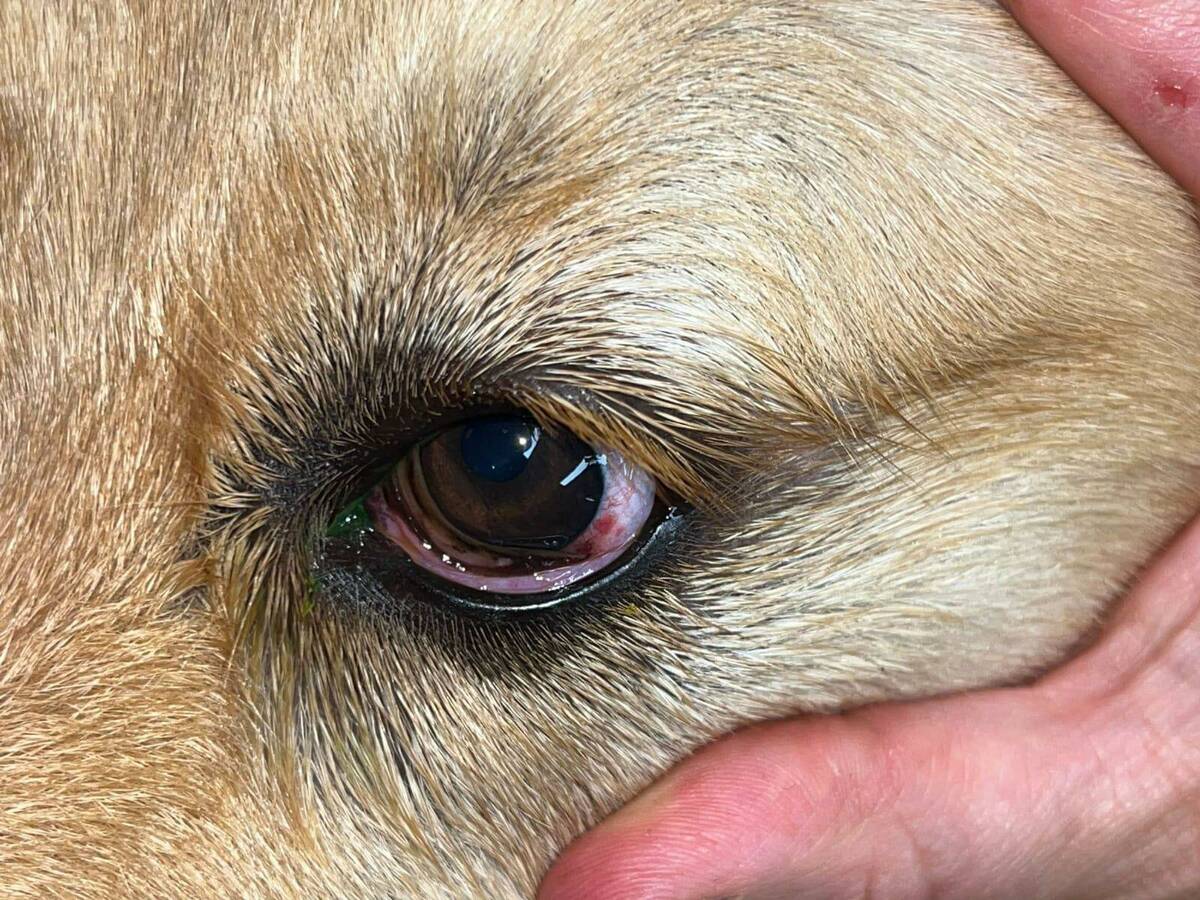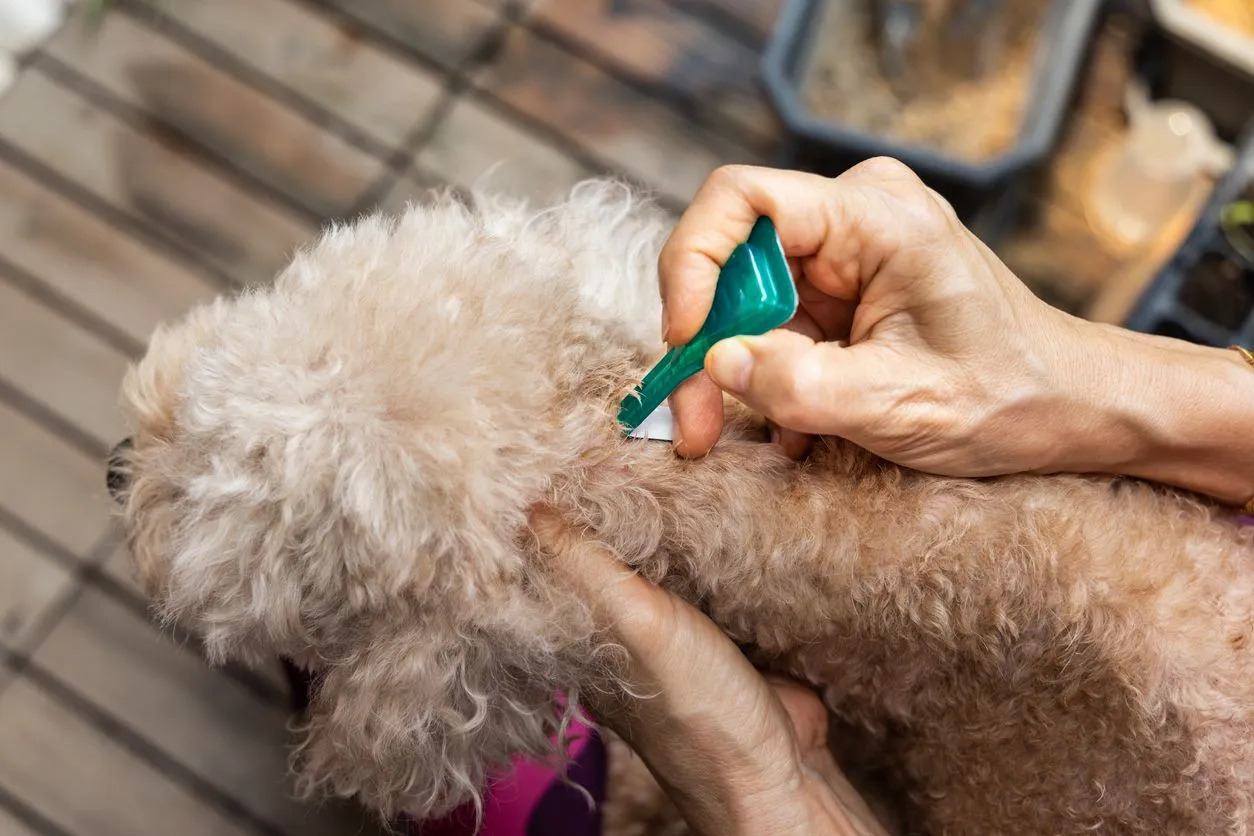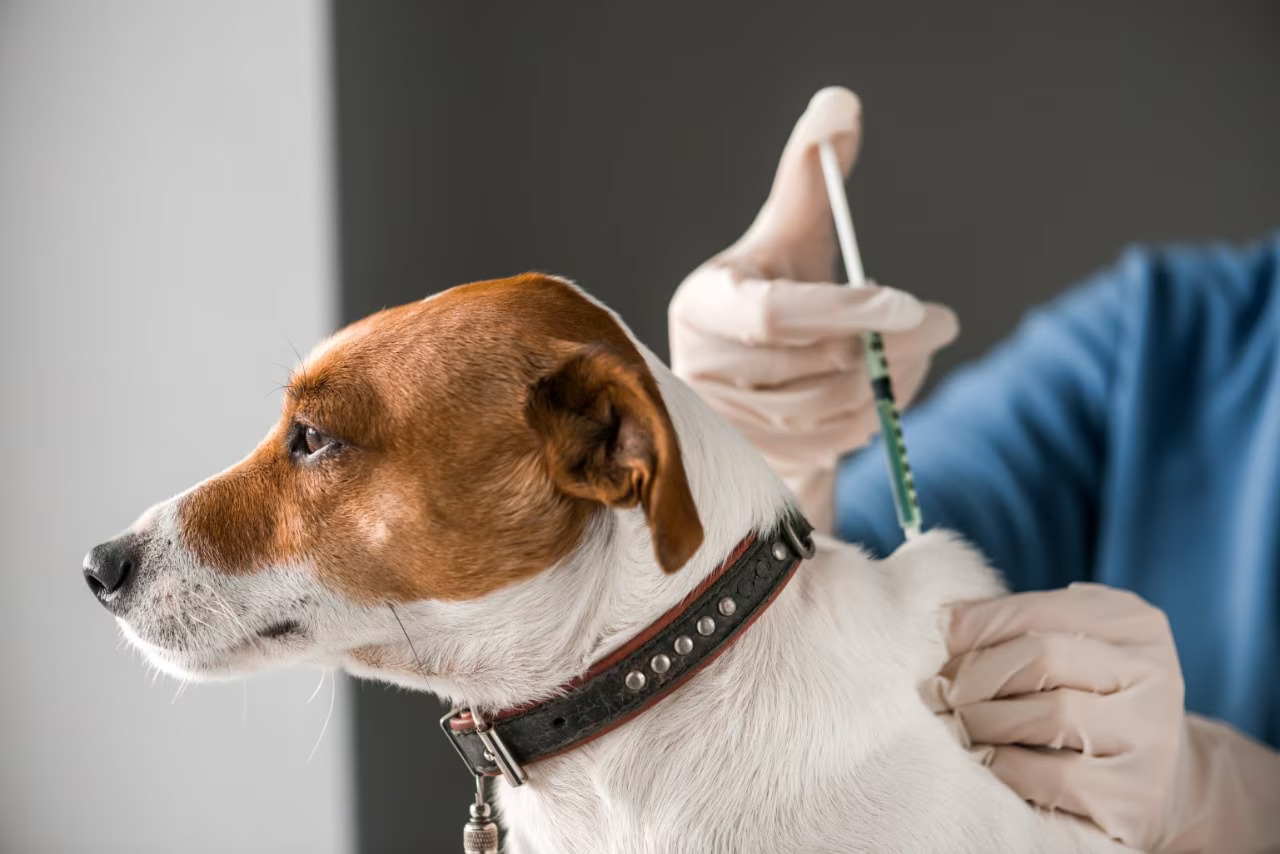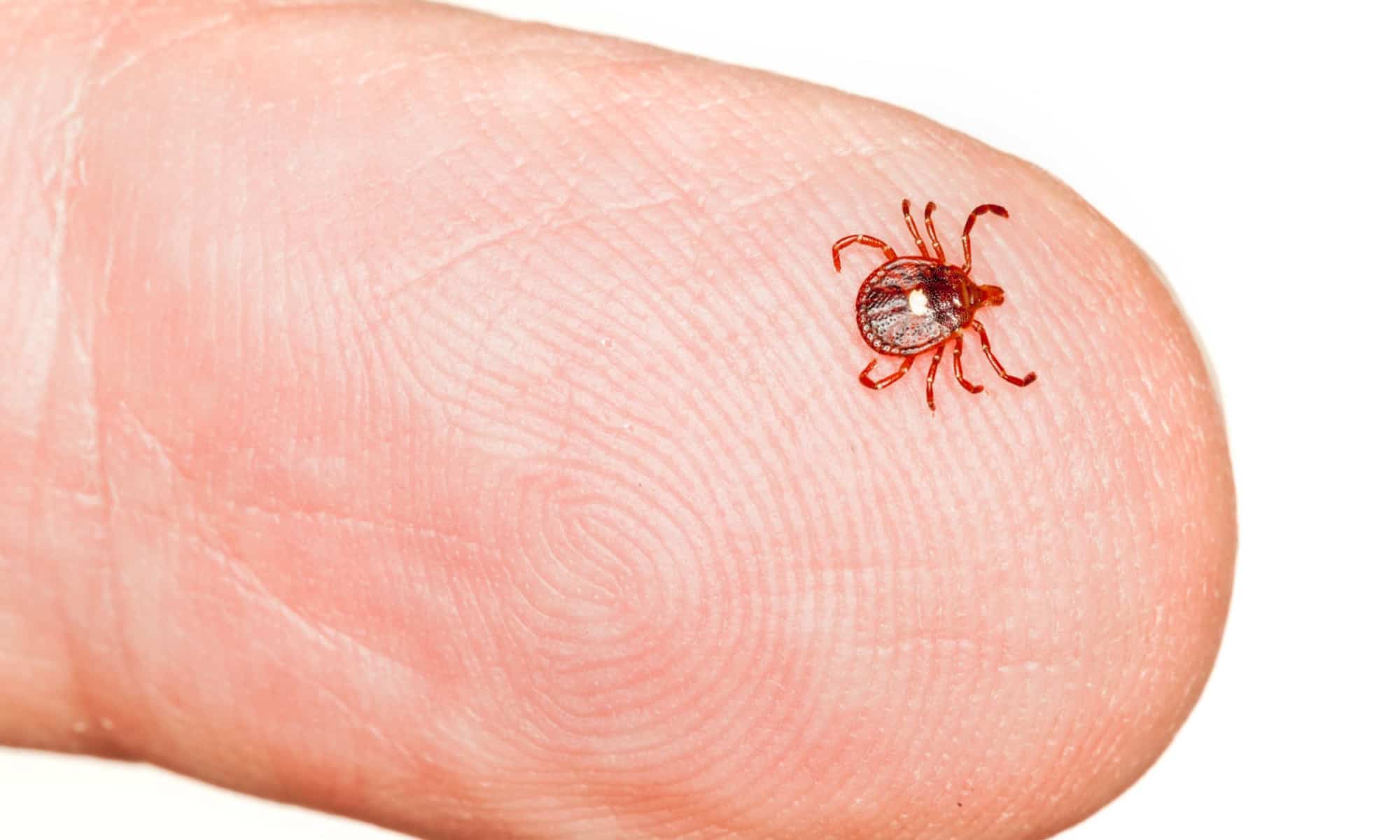Home>Health & Wellness>Common Health Issues>What Are The Worms Dogs Get From Fleas?


Common Health Issues
What Are The Worms Dogs Get From Fleas?
Modified: February 21, 2024
Learn about common health issues in dogs, including the worms they can get from fleas. Understand the risks and how to protect your pet.
(Many of the links in this article redirect to a specific reviewed product. Your purchase of these products through affiliate links helps to generate commission for Pawsomeoldies.com, at no extra cost. Learn more)
Table of Contents
Introduction
When it comes to our furry companions, keeping them healthy and happy is a top priority. However, dogs are susceptible to various health issues, and one common concern is the presence of worms. These pesky parasites can wreak havoc on a dog's well-being, causing discomfort and potentially leading to serious health complications. One of the primary sources of these worms is fleas, which can transmit different types of worms to dogs through their bites.
Understanding the relationship between fleas and worms is crucial for dog owners. By gaining insight into the types of worms that dogs can get from fleas, as well as the symptoms, treatment, and prevention methods, pet owners can take proactive measures to safeguard their canine companions' health.
In this comprehensive guide, we will delve into the world of worms that dogs can acquire from fleas. From detailing the various types of worms to exploring the symptoms and providing valuable information on treatment and prevention, this article aims to equip dog owners with the knowledge they need to protect their beloved pets from these insidious parasites.
So, let's embark on this enlightening journey to uncover the intricacies of worms that dogs can contract from fleas and learn how to effectively combat this common health concern.
Read more: How To Naturally Get Rid Of Fleas From A Dog
Types of Worms Dogs Get from Fleas
Fleas are not just a nuisance for dogs; they can also serve as carriers for various types of worms, posing a significant threat to canine health. The most common types of worms that dogs can acquire from fleas include:
-
Tapeworms (Dipylidium caninum): These are one of the most prevalent types of worms transmitted by fleas. When a dog ingests an infected flea during grooming or self-scratching, it can lead to the development of tapeworms in the dog's intestines. These worms are characterized by their segmented appearance, resembling small grains of rice, and can cause discomfort and digestive issues in affected dogs.
-
Roundworms (Toxocara canis): Fleas can serve as intermediate hosts for roundworms, facilitating their transmission to dogs. When a dog ingests an infected flea, it can result in the presence of roundworms in the dog's digestive system. These worms can grow quite large and may cause symptoms such as vomiting, diarrhea, and a potbellied appearance in affected dogs.
-
Hookworms (Ancylostoma caninum and Uncinaria stenocephala): Fleas can play a role in the transmission of hookworm larvae to dogs. When a dog ingests these larvae, or they penetrate the dog's skin, it can lead to the development of hookworms in the dog's intestines. These worms are blood-sucking parasites and can cause symptoms such as anemia, weakness, and dark, tarry stools in affected dogs.
-
Whipworms (Trichuris vulpis): While the primary mode of transmission for whipworms is through the ingestion of contaminated soil or feces, fleas can still contribute to the spread of these worms. When a dog ingests an infected flea, it can result in the presence of whipworms in the dog's large intestine. These worms can cause symptoms such as weight loss, diarrhea, and overall poor health in affected dogs.
Understanding the types of worms that dogs can contract from fleas is essential for dog owners to recognize the potential risks and take proactive measures to protect their pets. By being aware of these different types of worms and their associated symptoms, dog owners can promptly seek veterinary care and implement preventive strategies to safeguard their furry companions from the detrimental effects of flea-transmitted worms.
Symptoms of Worms in Dogs
Identifying the symptoms of worms in dogs is crucial for early detection and prompt intervention. While the specific signs may vary depending on the type of worm infestation, there are several common symptoms that dog owners should be vigilant about. These symptoms can serve as red flags, prompting pet owners to seek veterinary care and address the issue effectively.
Common Symptoms of Worms in Dogs:
-
Digestive Disturbances: Dogs infested with worms, such as tapeworms and roundworms, may exhibit digestive issues such as diarrhea, vomiting, and abnormal bowel movements. These disturbances can lead to discomfort and indicate the presence of internal parasites.
-
Weight Loss: Unexplained weight loss in dogs can be a sign of worm infestation, particularly with hookworms and whipworms. These parasites can cause nutrient depletion and hinder the dog's ability to maintain a healthy weight, leading to noticeable weight loss over time.
-
Lethargy and Weakness: Worm infestations can drain a dog's energy and vitality, resulting in lethargy, weakness, and a lack of enthusiasm for regular activities. Dogs may appear fatigued and less active than usual, signaling an underlying health issue that warrants attention.
-
Visible Worm Segments in Feces: In the case of tapeworm infestations, dog owners may notice small, rice-like segments in their dog's feces or around the anal area. These segments are a distinctive indicator of tapeworm presence and should prompt immediate veterinary consultation.
-
Potbellied Appearance: Roundworm infestations can cause affected dogs to develop a swollen or potbellied appearance, often accompanied by a decreased appetite and overall malaise. This visible change in body shape can be a telling sign of roundworm infestation.
-
Anemia: Dogs infested with hookworms may experience anemia, characterized by pale gums, weakness, and fatigue due to blood loss from the intestinal parasites. Anemia can have serious health implications and requires prompt medical attention.
-
Itching and Skin Irritation: While not a direct symptom of internal worm infestation, dogs with fleas, which can transmit certain types of worms, may exhibit excessive itching, skin irritation, and discomfort, indicating the need for flea control and potential worm assessment.
By being attentive to these symptoms, dog owners can take proactive measures to address potential worm infestations and prioritize their pets' well-being. Seeking veterinary guidance for accurate diagnosis and tailored treatment is essential in effectively managing worm-related health concerns in dogs. Additionally, implementing preventive measures, such as regular deworming and flea control, can significantly reduce the risk of worm infestations and contribute to maintaining a healthy and thriving canine companion.
Treatment and Prevention of Worms from Fleas
Effective management of worms transmitted by fleas in dogs involves a comprehensive approach that encompasses treatment, prevention, and proactive measures to safeguard canine health. When addressing worm infestations resulting from flea transmission, both treatment and prevention strategies play pivotal roles in ensuring the well-being of dogs.
Treatment of Worms from Fleas
Upon confirming a worm infestation in a dog, prompt veterinary intervention is essential to initiate appropriate treatment. The specific treatment approach may vary depending on the type of worms present and the severity of the infestation. Veterinarians may prescribe anthelmintic medications tailored to target the identified parasites effectively. These medications work to eliminate the worms from the dog's system, facilitating recovery and alleviating associated symptoms.
In cases of tapeworm infestations, medications such as praziquantel are commonly used to target and eradicate the segmented parasites. For roundworms, hookworms, and whipworms, anthelmintic treatments such as fenbendazole or milbemycin oxime may be prescribed to combat the infestation and restore the dog's gastrointestinal health. It is crucial for dog owners to adhere to the prescribed treatment regimen and follow veterinary guidance to ensure the successful eradication of the parasites.
Prevention of Worms from Fleas
Preventive measures play a pivotal role in mitigating the risk of worm infestations resulting from flea transmission. Implementing a robust flea control regimen is fundamental in preventing the transmission of flea-borne worms to dogs. Utilizing veterinarian-recommended flea control products, such as topical treatments, oral medications, or flea collars, can effectively combat fleas and reduce the likelihood of worm transmission.
Regular grooming and hygiene practices, including frequent bathing and combing, can aid in flea detection and removal, further contributing to preventive efforts. Additionally, maintaining a clean living environment for dogs, including regular vacuuming and washing of bedding, can help minimize flea populations and mitigate the risk of worm infestations.
Furthermore, routine deworming as part of a comprehensive preventive healthcare plan is crucial for addressing potential worm threats. Veterinarians may recommend periodic deworming treatments tailored to the dog's lifestyle and risk factors, providing proactive protection against internal parasites, including those transmitted by fleas.
By integrating both treatment and prevention strategies, dog owners can effectively combat worm infestations resulting from flea transmission and prioritize their pets' health and well-being. Proactive measures, including regular veterinary check-ups, adherence to preventive healthcare regimens, and vigilant flea control, are instrumental in safeguarding dogs from the detrimental effects of flea-borne worms, fostering a thriving and resilient canine companionship.
Conclusion
In conclusion, the relationship between fleas and the transmission of worms to dogs underscores the importance of proactive healthcare measures and vigilance in safeguarding canine companions from potential health risks. The prevalence of tapeworms, roundworms, hookworms, and whipworms transmitted by fleas necessitates a comprehensive understanding of the associated symptoms, treatment options, and preventive strategies to effectively manage and mitigate the impact of these parasitic infestations.
By recognizing the diverse symptoms indicative of worm infestations in dogs, including digestive disturbances, lethargy, visible worm segments, and skin irritation, dog owners can promptly seek veterinary care and address potential health concerns. Early detection and intervention are pivotal in preventing the escalation of worm-related complications and promoting the well-being of dogs.
Furthermore, the treatment and prevention of worms from flea transmission encompass a multifaceted approach. Veterinary-guided anthelmintic treatments tailored to target specific parasites, coupled with robust flea control measures and routine deworming, form the cornerstone of proactive parasite management. These strategies not only address existing infestations but also serve as proactive measures to minimize the risk of future worm transmissions, fostering a healthier and more resilient environment for dogs.
It is imperative for dog owners to prioritize regular veterinary check-ups, adhere to preventive healthcare regimens, and maintain a hygienic living environment to mitigate the risk of flea-borne worm infestations. By integrating these practices into their canine care routines, pet owners can effectively combat the detrimental effects of flea-transmitted worms and nurture a thriving and resilient companionship with their beloved dogs.
In essence, the bond between dogs and their human companions is enriched when proactive measures are taken to ensure the health and vitality of these cherished pets. By staying informed, proactive, and attentive to the well-being of dogs, pet owners can create a nurturing and supportive environment that promotes a vibrant and fulfilling life for their furry friends.














